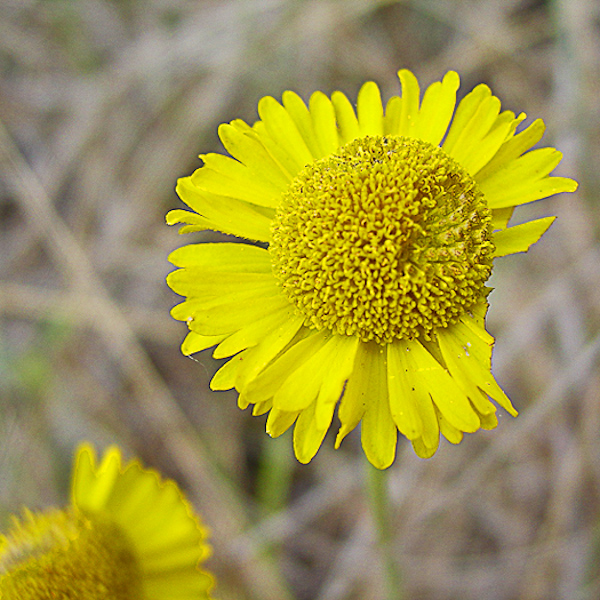Helenium pinnatifidum
Asteraceae, the Aster Family
The depression ponds of South Florida are among the most fascinating habitats hereabouts, with their feast and famine seasonal water extremes, patchiness, biodiversity, beauty, and enduring mysteries. Botanically heavenly! This week in wetfootland the seasonal inundation is giving way to dry soil exposure. St. Johnsworts are blossoming like champs. Gratiolas are transitioning from their surf to turf. Lovevine seems so happy on freshly invigorated hostplantss. It all smells nice. And today’s featured flowers are boldly yellow.

Sneezeweed with basal rosette. All “outdoor” pictures except the last today by John Bradford.
Southern Sneezeweed is dignified with its symmetrical yellow heads on stalks with perfect posture. Look closely at the yellow head, the outer ruffles are decorative sexless flowers having no stamens, no ovaries, and no fruits. The central business region is packed with a cluster of fertile flowers that open sequentially from the outermost to the innermost over an extended period, giving that single head a lot of bang for its buck despite the absence of branching.

Why the name “Sneezeweed”? The plant produces a bitter repellent containing an irritant called “pinnatifidin.” There are two non-mutually-exclusive explanations for how that became the basis for the name. One idea is that the sniffly resin is in tiny particles on the plant parts. If a person handles a drying specimen (such as in a museum), the tiny poison pills come free and tickle the botanist’s schnoz. The other explanation is that indigenous peoples employed the sneeziness as snuff. I ain’t dippin’ no Sneezeweed thank you very much.

Plants in seasonally wet-dry habitats are fun because they compete under both sets of circumstances. Somebody should write a book about that! Chapter 1 could be Helenium pinnatifidum, although nobody has ever really studied it. It grows in seasonally (or sometimes perpetually?) wet suffocating soil, even under intermittent shallow water. The plants are perennial living through the seasonal cycles year to year. Almost all the leaves are in a basal rosette, which if the going gets too rough (such as submerged in wet times, or burned when dry) can die back and recover in better times from the roots. In fact, gardeners sometimes buy heleniums as bare root perennials.

With age they can develop a strong durable rootstock.
You get a lot of rosette plants in places where it pays to “keep your head down,” such as heavy grazing or weather extremes. The safety of “duck and cover” is probably true in the present harsh marsh setting where several rosette species remain on the down low— Butterworts, Eriocaulons, Sundews, Syngonanthus, Violets, and Xyris. There may be a secondary advantage in this habitat to the rosette lifestyle. During the winter the dominant grassy-sedgy layer turns brown, which would allow increased light to the green rosettes who may have their main photosynthetic season while the grassy competition is thin and lifeless.

Flowers above the grass.
As the competing grassy layer greens up and becomes dense and competitive, the rosette plants seem to shift their priority to producing seeds while the soil is exposed. So they raise a flower or flower-head on a cheap temporary stalk (the scape) above the grass-sedge layer. Like a submarine safely down below raising a periscope.